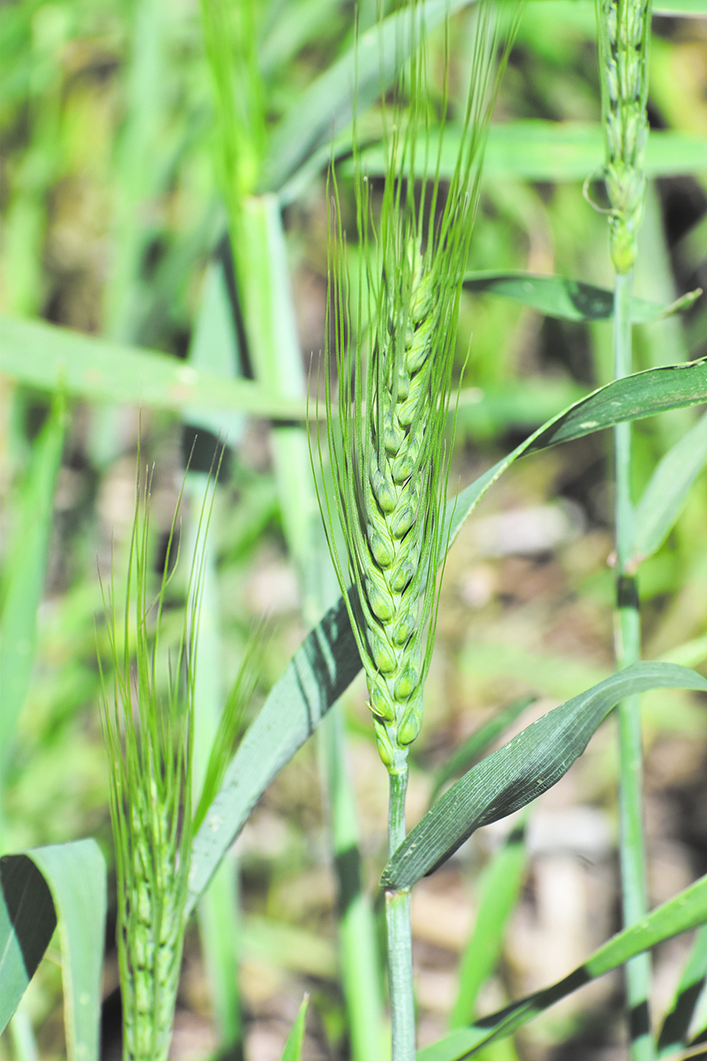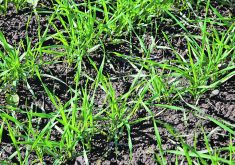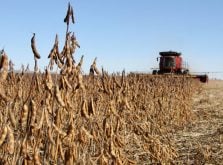Forget about seeding dates, focus on soil temperature when planting spring wheat.
Grain yield is often maximized when seeding spring wheat into soils at 2 C, and a greater reduction in grain yield was observed with wheat planted in 10 C soils compared to soils at 0, according to Agriculture Canada research.
When Brian Beres was growing up east of Lethbridge, a consensus in the area was if cereals were planted by May 10, they had a good chance of being a good crop.
Later, when he started his research program at the Ag Canada research centre in Lethbridge, he attended a meeting in Montana at the end of March where farmers were already geared up for planting.
“Why are we waiting so long and why are we held to these arbitrary calendar dates of when to initiate planting, and so that was the big motivation to get the whole thing started,” Beres said during a presentation at the College of Agriculture and Bioresources Soils and Crops virtual conference.
Modelling that suggested climate change could begin to challenge wheat production’s suitability in some Prairie regions provided another impetus for Beres to study early seeding dates in southern Alberta.
For instance, modelling conducted by Senthold Asseng from the Florida Climate Institute, showed there are “regions (in Canada) that are in trouble at 2 C (increase in temperature) with respect to far less than satisfactory production levels and a net loss of what they’ve been used to,” Beres said.
“It just gets worse globally as we get warmer. So, there’s a higher-level concern about climate change and what that means, whether we need to think about how we adapt to it.”
There are also people in the local farming community who have noticed a significant difference in seeding dates.
For instance, Don Boles from Three Hills, Alberta told Beres that he could seed six weeks earlier toward the end of his farming career compared to when he first started.
James Hunt, who studies ultra-early spring wheat seeding systems in Australia, is also helping farmers adjust to potential climate change issues.
“So, they’re looking at either early seeding systems or switching entirely to winter wheat systems as a way to overcome or adapt to their reality of what is available water wise,” Beres said.
To help adapt to the increased frost-free days in the Canadian Prairies, and to try to sidestep increased temperatures during grain filling, Beres designed a study that was first conducted at four locations in Dawson Creek, B.C., Lethbridge, Edmonton and Scott, Sask., from 2015-18.
The objectives for the first phase of the study were to determine the feasibility associated with ultra-early planting in cold soils, to understand the different responses between cold tolerance traits, conventional varieties and cultural practices, and then to develop a breeding tool that improves the rapid development of qualitative genes into winter wheat.
Multiple seeding timings were used, that were determined by the soil temperatures between 0°C and 10°C regardless of calendar date.
The study used two cold tolerant wheat varieties and Stettler, a conventional hard red spring wheat.
There were two seeding rates of 200 and 400 seeds per metre squared, as well as a two centimetre and a five cm seeding depth.
The actual seeding dates were all over the map.
“It was Feb. 16 in our second year, in the first year it was March 6 in Lethbridge. It’s all over the place because Mother Nature doesn’t really care about calendar dates,” Beres said.
“When things are ready, they’re ready and that’s not really something that’s consistent year to year. So, there’s no point being consistent year to year by adhering to a calendar date in my mind.”
Beres said the study did not find any yield penalty when planting at 2 C.
“Look at Stettler, for example, the most stable yielding system was when we went in early at 2 C. What is bad, if we look in the red here, we’re in situations where we just went in at 10 C.”
A yield drag was observed when planting was performed higher than 6 C.
He said planting into soil in the eight-to-10-degree Celsius range is common because many people think that warm soil is required before starting planting.
On the economic analysis, if growers wait to plant at a conventional time, they could see a $200 per acre loss, he said.
“You really do miss out on an opportunity with respect to building that photosynthetic machine,” Beres said.
“If you start off with the late planting date, you can never really catch up.”
The study found both cold tolerant lines and check cultivars performed well and that higher seeding rates have more yield potential and stability, which occurred more frequently with the shallow seed depth treatment of 2.5 cm.
He said some of the results in the study are only possible because of the use of seed treatments.
“A dual fungicide/insecticidal seed treatment will give your plant far superior resistance to those abiotic stresses than an uncoated seed would,” Beres said.
“It’s so important to the point that we didn’t even use it in our factorial’s arrangement, or design, because we just know that if you’re going to do this you need to do a seed treatment.”
When it comes to losses due the crop freezing after planting, the study experienced air temperatures as low as -10.2 C and as many as 37 nights with air temperatures below 0 C.
Beres said both cold tolerant genetics and conventional spring wheat genetics did not lose yield due to cold weather after seeding.
“We’ve had all kinds of stresses and we’ve been doing this long enough where we can confidently say that that’s not going to be an issue.”

He said it’s important to check to make sure your soil is compatible with your equipment.
For instance, a Conserva Pak style opener can create large aggregates when the soil is at 0 C, but a problem wasn’t observed going into soil at 2 C.
Later studies also compared knife openers to disc openers in this same type ultra-early seeding system, but to date there hasn’t been a difference between the two.
This year, the study has a new early seeding date of Feb. 9, and they are also looking at planting the seed late in the fall, around the middle of November.
“The proxy there would be to go in as long as the temperatures are no greater than 2 C because we would get some sprouting. Interestingly when the guys (recently) went out planting the seed had popped a little bit, but I don’t think that’s going to be too big of an issue. But anyway, we’ll see,” Beres said.
















